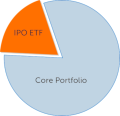The global IPO market produced 334 offerings in 2011, down 30% from 2010. Against the dismal backdrop of the downward spiraling euro-zone, a moribund US economy and heightened market volatility, however, the 2011 results are remarkable. In the US, 24 Internet companies went public, the most to do so in over a decade, and include three of the top five most anticipated Internet 2.0 names. The three largest private equity-backed deals in US history raised $8.3 billion. World-recognized luxury brands such as Prada, Ferragamo and Michael Kors completed IPOs. Had it not been for the Greek solvency crisis, which erupted in mid-summer, the US IPO market certainly and the global IPO market possibly would have continued the recovery that began in late 2009. Instead, as Angela, Nicolas and a changing cast of Italian, Greek and IMF leaders dithered, postured, and failed to reach resolution, the global IPO market collapsed in August, resulting in the worst IPO returns since 2007.
The global IPO market produced 334 deals in 2011 that raised $134.5 billion and returned -12% on average. Asia Pacific took a big hit, with 197 IPOs generating $68.6 billion, less than half the amount raised in 2010. Though the drop in proceeds was less dramatic in Europe due to Glencore’s $10.0 billion LSE listing, Europe was the worst performer, with the average IPO plunging -21%. Excluding Glencore, Europe would have raised $15.2 billion, down almost 50% from the amount raised in 2010. Asia was not far behind, returning -15%.
Despite a strong start to the year, the US IPO market faltered, with 125 deals, down from 154 in 2010. Over 60% of the 125 deals were completed in the 1H11 before the euro-zone crisis forced the US IPO market to shut down in August before improving only modestly in the 4Q11. However, the US was less affected than the rest of the world due to the Federal Reserve’s monetary policies coupled with several large financial sponsor-backed deals. Proceeds fell only 6% to $36.3 billion due to a jump in billion-dollar IPOs (six in 2011 vs. one in 2010). The US regained its position as the most active country for IPOs for the first time since 2008, edging out China and Hong Kong.
That said, US IPOs significantly underperformed benchmark indices, with an average return of -12% and two-thirds ending the year below their offer prices. Early exuberance behind Internet 2.0 fizzled as even big Internet names such as Groupon and Zynga were met with skepticisim. The FTSE Renaissance US IPO Index, which includes a rolling two-year basket of IPOs as of the first day close, returned -23%, meaningfully below the S&P 500 and Russell 3000, after posting superior returns in 2009 and 2010.
Get more statistics, rankings, top performers and year-end highlights here
Filing activity proved surprisingly resilient in the US, with 256 initial submissions to the SEC, just shy of the 259 seen in 2010. As a result, the US pipeline hovers close to 200 IPOs, the highest level since 2000. In addition, there is an equally large shadow pipeline of companies that have not yet filed with the SEC but are reliably rumored to be considering an IPO. Some of these companies, such as Facebook, LivingSocial and Gilt Groupe, are trading on pre-IPO markets SharesPost and SecondMarket. Also waiting in the wings are large private equity deals such as Hilton and Neiman Marcus.
Find out how to obtain pre-IPO research on these upcoming IPOs
These developments have positive implications for the US. Increased IPO issuance quickly translates into jobs and capital spending. Positive returns in the IPO market stimulate capital flows into riskier assets and encourage other entrepreneurial companies to enter the public markets, where they can raise larger amounts of capital than in private transactions. All in all, despite the seemingly never-ending euro-zone crisis, 2012 could be the start of an IPO spring!


